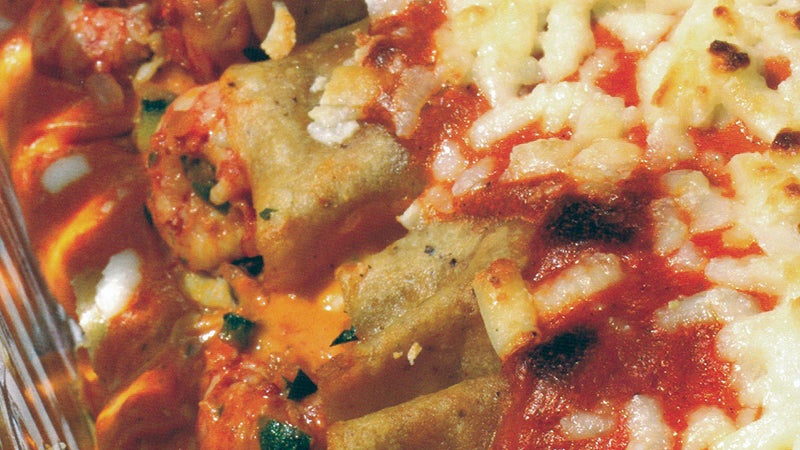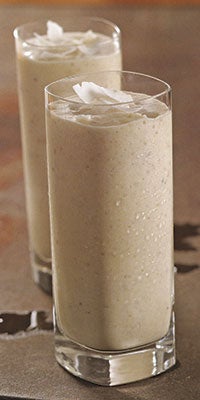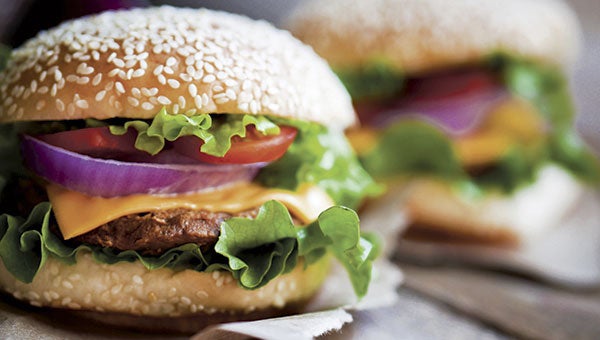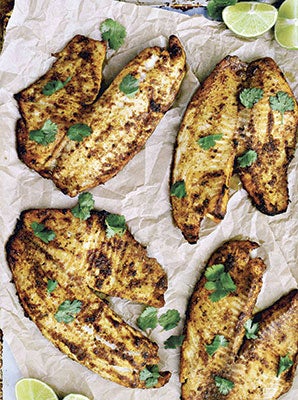Need a book for cooking? St. Mary’s has 1 for you
Published 12:00 am Saturday, April 24, 2010
At my new church I was asked to sign up for a Sunday to do food for their coffee hour after the service. They usually have donuts for the ones who do not cook. What to do to impress? I had just visited St. Mary’s in Andalusia and got to thinking about their cookbook, which I had purchased about a year ago named, Second Sunday.
St. Mary’s always had a lunch after service on the second Sunday of every month. The women and some men of the church tried out new recipes and it was fun to share them with all. This became the beginning of the cookbook. Some of these recipes are simple and old, and remind one how things used to be.
I used several of the recipes in the cookbook and some of my own; and the coffee hour, which was for 60, was a hit. My husband helped me make the coffee.
If you get a chance, go over to St. Mary’s and buy yourself a cookbook. It is one to keep or share with a friend. It is always fun to return and visit St. Mary’s, and they are so nice to let me continue to sing in the choir when I visit.
From St. Mary’s cookbook, Second Sunday.
Sausage Balls
1-lb. package hot or mild sausage
12 oz. grated sharp cheddar cheese
2 cups Bisquick
Put ingredients into large mixing bowl. Combine (knead) until all the Bisquick is absorbed. Pinch off small amount and roll into a 1-inch ball. Continue this process until all the mixture is gone. Place sausage balls on a cookie sheet and bake at 350 degrees for 30-40 minutes, or until golden brown. Serve hot.
Sausage balls may be frozen. When ready to use, remove amount needed from freezer and heat in microwave.
This recipe makes approximately 20 servings and was submitted by Eddie Whitehead.
Bacon Crackers
½ cup freshly grated Parmesan cheese
1 sleeve buttery rectangular crackers, such as Waverly crackers
1 pound sliced bacon, cut in half
Preheat oven to 250 degrees. Place 1 teaspoon cheese on each cracker and wrap tightly with a strip of bacon. Place the wrapped crackers on a rack over a baking sheet. Place in oven for two hours, until bacon is done. Do not turn. Drain on paper towels. Serve hot or at room temperature. Submitted by Pam Rabren.
I have used the following recipes for Second Sunday’s and the Epiphany Tea hosted by St. Mary’s on January 6th. These are not in the cookbook, but I should have gotten them in.
Apricot Cream Cheese Scones
Makes about 18 medium-size scones
3 ½ cups unbleached pastry flour, or 3 cups unbleached all-purpose flour plus ½ cup cornstarch
½ cup granulated sugar
2 ½ teaspoons baking powder
½ teaspoon salt
8 ounces cream cheese (cold)
8 tablespoons cold butter
1 cup (4 ½ ounces) diced or slivered apricots (dried)
1 large egg
2 teaspoons vanilla extract
¼ cup milk
Topping:
Milk
Sparkling white sugar or pearl sugar
Preheat the oven to 425 degrees.
In a medium-size mixing bowl, whisk together the flour, sugar, baking powder, and salt. Cut in the cream cheese and butter, using your fingers, a pastry blender, a fork or a mixer, until the mixture resembles coarse cornmeal, then stir in the apricots. In a separate bowl, whisk together the egg, vanilla and milk.
Combine the liquid and dry ingredients and stir until the dough becomes cohesive. Don’t mix and mix and mix; the more you work the dough, the tougher it gets.
Turn out the dough on a floured work surface and fold it over several times, until it holds together. Pat the dough into a ¾-inch-thick rectangle.
Cut scones with a round cutter, gathering the scraps and re-rolling the dough. Or simply cut the dough into squares or diamonds. Brush the tops lightly with milk and sprinkle with sparkling white or pearl sugar.
Place the scones about 2-inches apart on an ungreased or parchment-lined baking sheet. Bake them for eight minutes. Turn the oven off, leave the door closed and continue to bake for eight more minutes, until the scones are a light golden brown. Serve hot with clotted cream.
I usually serve them with lemon curd.
Sunburst Muffins
Makes 3 dozen
1 18 ½ ounce box lemon Supreme Cake Mix
1 3 ¾ ounce package instant lemon pudding mix
½ cup vegetable oil
1 cup buttermilk
4 eggs
3 tablespoons fresh lemon juice
6 tablespoons fresh orange juice
1 ½ teaspoon vanilla
3 ½ cups confectioners’ sugar (sifted)
Combine first five ingredients and pour into greased small muffin tins, filling the cups only 2/3 full. Bake in a 350 degree oven for 10 minutes. Dip the warm muffins into the glaze made of the last four ingredients. Place on a wire rack to cook.
The scone recipe comes from The King Arthur Flour Baker’s Companion—The All-Purpose Baking Cookbook. While I was looking for it I decided to do their cheesecake recipe, and it turned out to be the hit of the coffee hour! The real secret was the crust, which is a cross between a classic piecrust and a cookie.
Pte Sucrée
Makes one 9-10-inch crust
1 ¼ cups pastry or unbleached all-purpose flour
¼ cup sugar
¼ teaspoon salt
8 tablespoons butter (cold)
1 large egg yolk
1 teaspoon vanilla extract
1 tablespoon water
In a medium-sized mixing bowl, whisk together the dry ingredients, then cut in the cold butter. Whisk together the egg yolk, vanilla, and water and stir into the dry mixture; the dough should be crumbly but hold together when squeezed. Roll out the dough, or press it into the bottom and up the sides of a 9-inch square pan or 10-inch round (preferably removable bottom) tart pan. Prick it all over with a fork and refrigerate for 30 minutes or longer.
Preheat the oven to 375 degrees.
To prepare a blind-baked, ready to fill crust, weigh down the crust with pie weights, a nesting pie pan, or line with parchment and fill with rice or dried beans. Bake for 10-12 minutes, until the crust is set. Remove weights, extra pan or parchment and return to the oven to bake for another six to eight minutes, until golden brown. Remove it from the oven and cool before filling.
Classic Cheesecake
Makes about 16 servings from a 10-inch cheese cake pan
Prepare the crust and turn the oven down to 325 degrees.
Filling:
3 packages (8 ounces) cream cheese (at room temperature)
1 ¼ cups sugar
¼ teaspoon salt
4 large eggs
3 tablespoons freshly squeezed lemon juice
1 tablespoons vanilla extract
1 cup sour cream
½ cup heavy cream
Using an electric mixer, beat the cream cheese until soft and no lumps remain, stopping to scrape down the bowl once or twice. Do this using the slow speed; you don’t want to incorporate air into the mixture. Add the sugar and salt and mix until well blended. Add the eggs one at a time, beating until the mixture is smooth before adding the next egg, scraping the bottom of the bowl after each addition. Stir in the lemon, vanilla, sour cream, and heavy cream. Stir just until the mixture is smooth.
Pour the batter into the prepared pan. Bake the cake in a 325 degree oven for 45-50 minutes; the edges of the cake will look set and be a light golden brown and the middle should still jiggle when you nudge the pan. The internal temperature when measured from the center should be 165 degree or above. Turn the oven off, open the door slightly, and let the cheesecake cool slowly in the oven for one hour. During this time the center will finish setting. Cooling the cake slowly will keep the top from cracking and ensure an even, smooth texture inside.
After an hour, remove the cake from the oven and run a knife around the edge to allow the cake to contract as is cools. Refrigerate overnight before serving. You can top with fruit or whipped cream, but I thought it was best to serve as is. The cream cheese and sour cream, with the vanilla and lemon gave the cake just the right accent.





